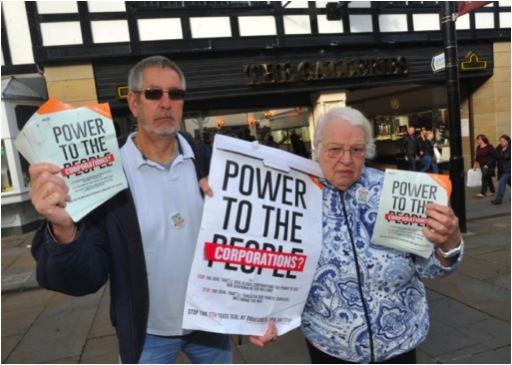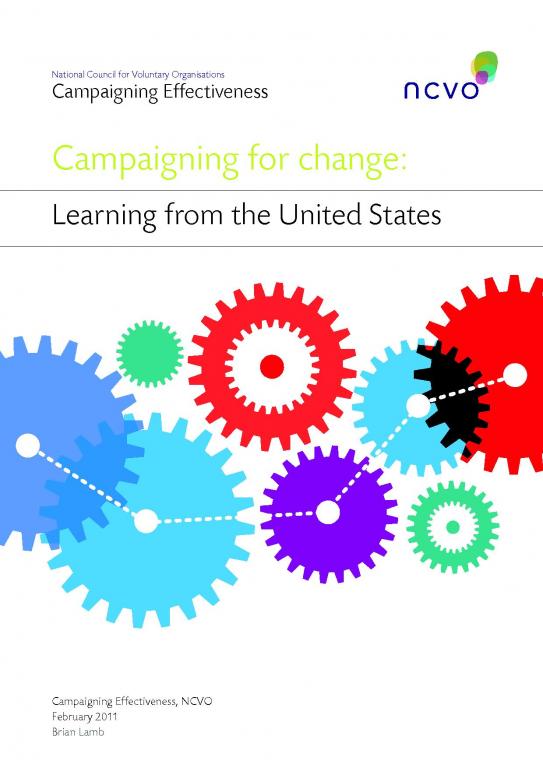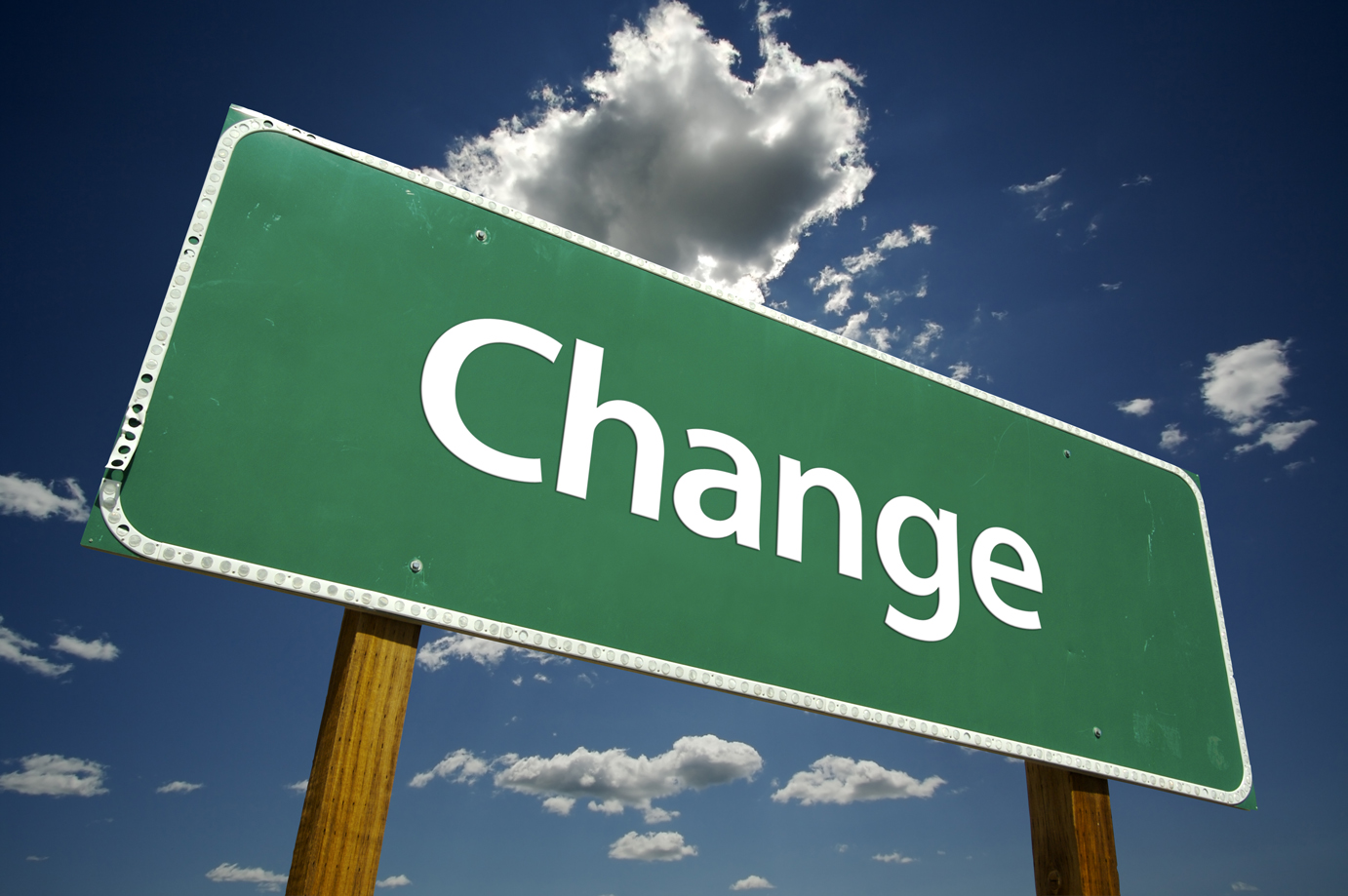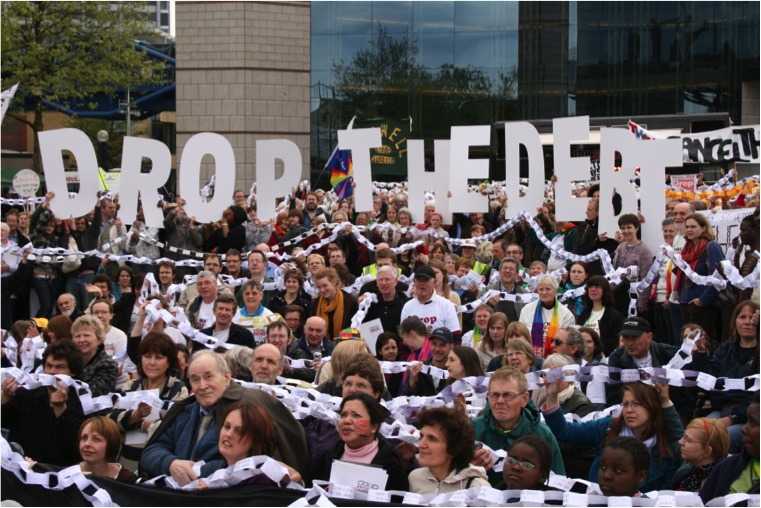It was the NCVO Campaigning Conference yesterday – it’s always an interesting day bringing together a mix of campaigners and public affairs colleagues from across a range of issues.
As always you walk away with a notebook – or in my case multiple scraps of paper – full of notes, thoughts, good ideas and top tips – and a frustration you couldn’t be in more than one session.
Here are 10 things that I took from my morning at the Conference – do check out #ncvocc for more insight.
1. Brexit is the focus for government – both Jess Phillip MP and Jonny Mercer spoke about how the Brexit negotiations will dominate everything that happens in Parliament and Whitehall in the coming years. It’s not just because it’s the most important political decisions that many of us will see in our lifetimes, but it’s also because it’s taking up so much capacity from civil servant and ministers other issues are getting pushed to the side. Campaigners looking to get noticed will have to push harder than ever.
2. MPs really are tired of email petitions – so this isn’t news, and you almost expect to hear it from MPs in sessions like this, but when two pro-campaigning MPs who are instinctively on our side tell you that they’re fed up of pre-written email petitions, you know it’s time to think long and hard about if the tactic is doing more to hinder than help. Jess reminded us that she get’s over 6,000 emails every day, and the response to any pre-written email is to ensure a member of staff responds with a standard template email.
3. It’s MPs staff you should be getting to know – they’re the gatekeepers to most MPs, the ones who make key decisions about diaries and briefings. Build good relationships with them and it can really help you to get your campaign in front of an MP. Treat them badly and don’t expect to see much progress.
4. Ask do you really need to be in a coalition – I was fortunate to chair a really lively and interesting session on coalition campaigning. Jane Cox from Principle Consulting reminded us that there is a cost to coalitions (perhaps Jane had ready my blog on this) – sometimes a strategic partnership is a better approach than the time commitment an effective coalition can be. Jane wrote a really useful post with some of her learning from coalition campaigning.
5. Keep going until the end – too many coalitions just focus on the immediate change outcome, and when they’ve succeeded in delivering that they stop. That can be a mistake and often ensuring that you monitoring implementation is as important. This is something that you should factor into your planning – especially when applying for foundation support for your campaign.
6. We need to talk about power – Heather Kennedy from the Fair Funeral Campaign reminded us of the principle from organising that you either have organised money or organised power – if you’re opposition is organised money it can be easy for them to ‘sit it out’ until you’re coalition has come to an end. It was one of the few references through the day to power – which given campaigning is often about winning feels like it was something missing from the conversation.
7. Celebrate success in a generous way – Heather shared about how the Funeral Poverty Alliance has built it’s coalition over the last few years and managed to put the issue on the agenda – it sounds like a really great campaign coalition which doesn’t have lots of governing documents but has placed building relationships through well facilitated strategy sessions and strong face-to-face relationships. Demonstrating that coalitions don’t have to be dominated by ‘egos and logos’!
8. When developing campaign leaders high commitment should mean high support – I really enjoyed the session on developing volunteers as campaign leaders – it felt that there was a recognition that in response to the declining effectiveness to e-petitions we need to look again at building our networks.
I’ve been aware of the work that Alice Fuller and her team at the MND Association have been doing at building a network of Campaign Contacts in their local groups over the last few years, but it was great to hear more about it – and to hear some honest reflections about how much the team have learnt about the level of support they need to provide, the commitment to training and investing in volunteers, but also letting go and trusting volunteers.
9. Metrics matter – Eleanor Bullimore spoke about the work, and the challenge of developing relevant metrics to measure the impact of the work that volunteer network at The Ramblers is having. Elle suggested that as well as developing metrics for going up the the ‘ladder of engagement’ we also need to be looking at those going down – recognising that some volunteers will find they have less rather than more to offer.
10.Trust us – Joining Alice and Eleanor was Katy Styles, one of MND Associations local campaigners. It was so refreshing to hear of the ways that Katy had been able to get involved in leading MND’s campaign (Katy has helped to produce this cracking toolkit) – and to be reminded that most people aren’t paid to campaign they do it because of a passion. The big message that I’m taking from Katy was as professional campaigners we need to let go of our concerns about brand and reputation and trust our volunteers.
Update – all the presentations from the sessions are available here.
Category: trends
Too important to ignore? – 4 moments that could shape campaigning in 2016
We might be 2 weeks into 2016 but I don’t think it’s too late for some predictions….so here are a few moments and processes to watch out for that I think are going to have a big impact on campaigning in the next 12 months. I’d be interested in knowing what you think, please add your ideas in the comments below.
Don’t ignore the House of Commons Petition Site – Launched with limited fanfare last year, the House of Commons has updated its petition website – with new thresholds for response and debate. Watch for how active the Petitions Committee which is responsible for deciding what to do with the petitions are in the coming year at responding to petitions that hit the 100,000 signature threshold.
I’ve been at a number of events where I’ve heard MPs express concern about the volume of e-actions they’re getting (that’s a whole other blog to write) so it could be that some MPs start to push for the House of Commons petition site to be the way that they want campaigners to interact with them – the new site already has a function to see how many people have signed per constituency.
The EU Referendum is going to set the political weather – of course we don’t know the date for this yet – I’m predicting September, but this from Tim Montgomery, is as always, very perceptive about how it’s shaping the political decision making for the Government.
This government is behaving differently because the outcome of the In/Out referendum (likely to be held in June 2016) may well determine David Cameron’s place in history and is uppermost in his mind. He risks Britain’s membership of the EU if he’s an unpopular mid-term prime minister at the time he is recommending Britain should vote to “remain” (as he certainly will). I underestimated Downing Street’s determination to organise everything in terms of avoiding Brexit. The go-slow on cuts, the living wage announcement, the retreat on tax credits, the extra money for defence… this pre-referendum behaviour is pretty boilerplate pre-election behaviour.
Referendums are largely unknown phenomena for issue campaigners in the UK. The AV referendum hardly caught the public imagination, while the Scottish referendum has caused a political earthquake in a number of ways. The EU referendum is going to shape much of the political dialogue and decision making for the next 12 months.
Look to the US Presidential Election for the future of campaigning – I wrote before the 2012 election that given the budgets involved and the importance of the outcomes it’s the single moment that will shape the future of campaigning tactics and approaches. I can’t see the changing in 2016.
Looking back at the articles that following the elections there was lots shared about how to use data and more data, but dig around more and its also about the organising approach – so as we head towards the vote in November keep an eye out for the lessons and approaches – we’re already seeing stories about advanced data mining via Facebook, and here for some other early trends.
Don’t think you can leave the Fundraising Preference Service to your fundraising colleagues to worry about – Don’t think that the scheme – which has been developed in response to media stories over last summer -will just effect your fundraising colleagues. While the details are being worked out it could have big impact on all charity communications – including those you send about campaigning.
But this is also about how the actions of charities are becoming increasingly scrutinised – I’ve written before about the threats to campaigning, and sadly in 2016 I can’t see that changing (although at the end of 2015 we got a commitment that CC9 an important but little known piece of guidance that allows charities to campaign when they’re doing so in line with their charitable purpose won’t be reviewed). We’ll need to be make the case for what’s been changed as a result of campaigning in 2016.
Did you know you can sign up to get new posts delivered direct to your inbox? Subscribe here.
Speed, Sophistication, Structures and Space – 4 trends that will define the future of campaigning
In my role as Head of Campaigns and Engagement at Bond, I was ask to write about the trends that will impact the campaigning of members over the next 5 years, and what it means for our work to support members to campaign brilliantly. I came up with the following;
1 – Speed
The first campaign I was involved in was Jubilee 2000. I remember the record breaking petition, the sense of excitement as the latest Christian Aid News would come through the letterbox with an update, and the delighted when we heard we had succeeded in getting the G8 to cancel the unpayable debt.
It took the Jubilee 2000 campaign over 2 years to collect the 22 million signatures that formed the record breaking petition handed to G8 leaders. Anyone who collected those signatures will talk of the hours spent collecting petitions in churches, at street stalls and in student unions bars across the UK, winning the signatures one conversation at a time.
Fast forward to today, where it’s possible for a partnership between Guardian and Change.org to generate 250,000 signatures on FGM in 20 days, and many Bond members are able to generate tens of thousands of emails in a matter of days or weeks. Campaigning organisations able to launch a campaign in a matter of moments in respond to the latest event or news headline.
But while campaigning is getting faster, we’re also seeing a rise in slow activism? Organisations like the One Campaign and Tearfund are encouraging supporters to write handwritten letters to MPs around the recent legislation on 0.7% or All We Can encouraging supporters to stitch mini-protest banners ahead of London Fashion Week, part of creative ‘craftavist’ movement, which encourages reflective action that seeks to change the participant as much as it does the world. I think we need both within our movement, and a willingness to learn from both approaches.
2 – Sophistication
We know more about our supporters than we ever have, what actions the like to take, what topics they’re interested in, if and when they’ll open their emails from us, and as a result we can target our campaigns in more and more sophisticated ways. A recent report suggested “neuro-campaigning” following politics and advertising to use a better understanding of how our own brains work to persuade people to take action. With all this evidence, as campaigners we need to continue to invest more and more in testing of our messages and tactics before we share them.
A focus on what tactics to use, shouldn’t mean we overlook the importance of theories of change at the heart of our campaigning, including challenge ourselves to ask if we’re too focused on targeting our campaigning towards MPs, Government Ministers and UN bodies, or if we should follow Action Aid focusing on local councillors, or corporate divestment championed by Share Action and 350.org, or local media like RESULTS.

3 – Structures
As much as we need to build campaigning structures that are fit for a digital era, we shouldn’t overlook the importance of investing in an active and vibrant grassroots network. For me it’s always been the hallmark of our movement, the local activists that collect names on petitions and meet with their MPs.
I want to learn from groups like 38 Degrees, about how they mobilised 10,000+ volunteers as part of the Days of Action on TTIP, or Toys will be Toys, an entirely volunteer led campaign about how they’re successfully joining up offline and online actions.
A focus on structures should not only be about how campaigns are organised, but also about challenging the very structures that perpetuate inequality and poverty. While we should take advantage of opportunities like the recent Private Members Bill on 0.7%, but the danger in focusing on ‘the little big thing’ is that we risk not building public understanding about the root causes of poverty that should be central to our campaigning.
4 – Space
The Lobbying Act or comments by the former Charities Minister that we should ‘stick to knitting’ reinforce to me that we’re seeing a narrowing of the political space campaigning organisations have to advocate. I believe we should feel proud as a sector of the positive impact our campaigning has had on the lives of the communities we work with. We should all fight to protect it.
Before starting at Bond, I helped to found Campaign Bootcamp, a training programme for those looking to start a career in campaigning. We were overwhelmed by the generosity and enthusiasm we found to help us. That experience has shown me the strength of the community we have, committed to work together to share and help each other.
This is an edited version of an article first published in The Networker available here.
Can campaigning help fundraising?
In my work, I’m often asked can campaigning help an organisation with fundraising? I’ve always replied ‘yes’, based on a belief that advocacy campaigning can be useful in;
- Helping to recruit new supporters into an organisation – especially at a festival or other event where making a financial ask can be seen as a ‘high barrier to entry’.
- Differentiating the asks we make of supporters – so we’re not always asking them to give us more money.
- Building loyalty of our organisation and reducing the attrition rate.
 But it’s not always been based on much empirical evidence to prove the point.
But it’s not always been based on much empirical evidence to prove the point.
The reality is that is doesn’t appear that we have a huge number of examples or studies to draw upon, but here are three studies that all provide evidence that campaigning is good for fundraising.
1. National Bureau of Economic Research Working Paper.
Andreas Lange and Andrew Stocking in this 2009 Working Paper found that from a sample of 700,000 supporters of a large US advocacy organisation, that a person who takes an online advocacy action for your cause is seven times more likely to donate, compared with someone who does not take an online advocacy action.
2. PETA France.
Working with Engaging Networks, PETA France demonstrated that advocacy is an effective way to engage lapsed donors. They sent out various emails on the issue of seal clubbing to a total of 22,000 supporters.
As well as finding a correlation between level of activism and response rate, the more active the campaigner, the better the response rate. They also found that lapsed donors were significantly more likely to donate if asked to take action first then donate.
3. Greenpeace
Again working with Engaging Networks, found that directly integrating campaigns with donation pages as part of their Arctic campaign lead to a 1.23% response rate, compared to providing a donate link on the thank you page of the campaign action led to a best ever response rate of 0.4%.
What other studies or examples have you found to demonstrate the links between campaigning and fundraising?
Can 'Theory of Change' transform our campaign planning?
To be honest, I’ve struggled to get my head around the ‘Theory of Change’ approach that I’ve seen being talked about across the sector over the last year.
I’ve felt that its something that could be an incredibly powerful tool, but found it’s been hard to really understand of it.
In an attempt to understand it, I attended a Breakfast Briefing organised by NCVO with Brian Lamb last month. Brian has been a leading proponent of the approach for use in campaigning and wrote this report which I blogged on last year.
 Hearing Brian talk through how campaigners could make use of Theory of Change was really helpful at bring the theory behind the tool found in various reports and guide that I’ve read to life.
Hearing Brian talk through how campaigners could make use of Theory of Change was really helpful at bring the theory behind the tool found in various reports and guide that I’ve read to life.
I came away from the time enthusiastic about if for the following reasons;
1. It get’s us to question our assumptions – One of the central features of the approach is to get you to name and provide evidence for the assumptions you’re making that lead you decide that the impact a certain input will have
I’ve long thought that we need to more to justify the decisions that we’re making between impact and outcome, and Theory of Change actively encourages you to do this, demanding you to list your assumptions and discuss why you’ve made them.
In doing so, I think its likely to force us to ask the question, what are the ‘most effective approaches I could use’ as opposed to ‘what existing tools do I already have that I need to use’.
2. It builds from impact up – The first thing that the approach asks you to do is to decide on the impact of your advocacy, this is defined as ‘the ultimate effect on the lives of those you’re seeking change for’.
Brian suggested that while this might sound like a straight forward question to answer, it often takes groups considerable time to come up with the answer to the question, but in doing so they help to reach common understanding of the change they’re seeking.
I know I’ve been in campaign planning sessions before where we’ve spent the majority of our time on agreeing a strategy to reach a policy solution; as opposed to asking what impact we want to that solution to have.
3. Provides clear building blocks – The approach is simple and logical. Working upwards from impact, to mapping  the strategies that will be needed to achieve this, to looking at the outcomes needed from activities to achieve this, to looking at the activities that will be required at the heart of the campaign.
the strategies that will be needed to achieve this, to looking at the outcomes needed from activities to achieve this, to looking at the activities that will be required at the heart of the campaign.
Also, because the built, there are lots of existing tools that already exist that can be used to help to guide our theories of change. In the session, Brian shared the work of the Harvard Family Research Project which has undertaken extensive research to identify a number of common approaches to policy goals and activities/tactics. Great source materials to help in campaign planning.
4. Gives us a common language – At the heart of the Theory of Change approach is the need for dialogues and discussion to reach conclusions. In the use of approaches like ‘so that’ chains (where you need to articulate a logical path between the steps you’re suggesting).
Throughout the process it provides opportunities for campaigners to clearly articulate their approach, but also invite others to test and question the logic. I can see how this is really helpful in unpacking the ‘mystery’ of our campaign planning to others, and helping to answer the hard questions
5. Helps to think about the best ways of allocating resources – You’re required to put all the outcomes and activities on the table in the process, rather than selecting those you think possible with the resources that you have.
Doing that means you can look afresh at how you might resource new approaches, or think creatively about new alliances to forge. The research also has some invaluable ‘checklists’ about what an organisation needs to have the capability to undertake effective advocacy.
My conclusion. That its worth investing the time into grappling with Theory of Change because it’s got huge applicability to campaigning and that its great to find someone to help work you through an example of the approach in person.
Review: Page One – Inside the New York Times
A new documentary raises some questions about the challenges that newspapers are facing in the UK and the impacts that could have on our use of the media in campaigning.
We don’t have a UK equivalent to The New York Times, the paper of record in the US, but even so Page One – Inside the New York Times is a fascinating and thought-provoking documentary for any campaigner who wants to think about what impact the perfect storm of a decline in advertising revenue and the growth of social media will have on newspapers on both sides of the Atlantic and by extension campaigns that use them to raise public awareness of key issues.
[youtube http://www.youtube.com/watch?v=BCdsSezvACw]
The film spends a year or so, following the journalists on the Media Desk of The Times as they try to make sense of the changing media landscape and the need to cut costs, while at the same time breaking huge stories like Wikleaks.
Some of the themes that documentary picks up on are similar to issues that Nick Davies touches on his excellent book Flat Earth News which looks at the decline of news reporting in the UK, and a book I’d also recommend for anyone wanting to understand the challenges faced by many journalists.
For me as a campaigner, the documentary raised some great questions to reflect upon;
- What’s the impact of a decline in the resources that are available to newspapers to dedicate to longer and more investigative pieces of journalism? Does this present an opportunity in the short-term where newspapers are more likely to work with campaigning organisation to provide these stories?
- Will online sites like Huffington Post have the same resonance with policy makers? What takes the place of the columnist or editorials who cited as influencers. Will this increase the importance of key broadcast shows, like Today and Newsnight, when it comes to ‘setting the agenda’?
- Will we see the same rapid decline in the ‘tabloid’ media? It not, do we have campaigns that were able to pitch to them?
- What impact does a media model that is driven by ‘popularity’, for example the website group Gawker has a ‘big board’ that displays the 10 most popular stories, have on our ability to get campaign themes that aren’t interesting, but yet of critical importance in front of the public?
- Is an increasingly open media environment a good thing because it makes it easier to get our messages out, or a bad thing because it makes it harder to get a critical mass of the public aware of our campaigns?
I’d suspect that the film will have limited releases in UK cinemas, but I’d highly recommend that you go and watch it or get it out on DVD.
Advocacy in 2020 – future trends and how to prepare for them
They’re well worth a read as they provide a huge amount of insight into what might be coming on the horizon, much of which could have huge impacts on our advocacy and should also provide a challenge for any organisation that hasn’t spent a little time thinking about how it’ll respond to a changing environment.

Alex Evans who, amongst other things is editor of the excellent GlobalDashboard.org, authored the ‘2020 development futures’ paper for Action Aid, in it he makes 10 recommendations for the next 10 years.
They’re all insightful but 5 stand out as being especially important to advocates;
1. Be ready for external shocks – A reminder that external shocks are often the key driver of change, reflecting on the quote from Friedman that ‘Only a crisis – actual or perceived – produces real change. When that crisis occurs, the actions that are taken depend on the ideas that are lying around‘. Evans suggests that ‘Civil society organisations should put aside a substantial proportion of their policy and advocacy to roll them out rapidly when ten times as much political space opens up overnight, for three weeks only‘.
2. Putting members in charge – arguing that we’ve traditionally built our engagement on largely passive engagement of members who have responded by signing a postcard or donating money. Evans argues that CSOs need to ‘put their members in charge as far as possible using technology platforms to ask them regularly what to campaign on, where, how to do it, and how they want to be involved’.
3. Specialise in coalitions – but not simply civil society organisations, suggesting that power is going to become more diffuse and that it’ll be going to bloggers, citizens, NGOs, businesses and beyond. The effective civil society organisations will need to be the catalysts to create shared platforms and the glue to keep them together. Practically, Evans suggests that coalitions will need to be more diverse and will need staff within CSOs who have experience outside the civil society sector who can act as ‘translators’ in bring these diverse coalitions together.
4. Expect failure – Which is linked to being ready for external shocks, but also recognising that CSOs will also expect to find their own operations under stress. I’ve written before about how we shouldn’t see failure as a bad thing as long as we learn from it.
5. Be storytellers – suggesting ‘if diverse coalitions are key to effecting political change, it is narratives, and compelling visions of the future, that can animate networks and coalitions over the long-term‘ and calling on CSOs to be storytellers about the future.
If you’re inspired to spend some time thinking about how future trends might impact your work, here are some ideas to get you started.
- Have a read of NCVOs ‘Making Sense of the External Environment‘ booklet.
- Gather together some colleagues and spend 30 minutes trying to draw together PEST or PESTLE analysis on the trends that might affect campaigning in the coming years – both are simple tools that allow you to gather your thoughts on what might be happening in key areas.
- Based on your PEST chart, ask yourself what will campaigning look like in 2020. Identify different scenarios and consider how your campaign might adapt.
- Spend sometime soaking up ideas on sites like trendwatching.com or www.3s4.org.uk
- Look at NCVO Future Focus booklet which asks what will campaigning look like in 5 years time.
- Come up with a list of up to 5 practical things you’re going to do to respond. I’ve found it’s easy to spend lots of time thinking about future trends but organisations often struggle to start to act on them.
Four exciting things happening in campaigning
I spent some time with some colleagues last week talking about future trends in campaigning. As part of it, I was asked to share the four things most exciting things happening in campaigning at the moment.
Here’s my list, what would you include?
 Change.org – Combining e-activism and crowd sourcing, change.org seems to have hit upon a great campaigning tool.
Change.org – Combining e-activism and crowd sourcing, change.org seems to have hit upon a great campaigning tool.
Although it’s not had a big launch in the UK yet, it did manage to generate two significant actions to Home Office in the last 12 months. Change combines a platform to allow individuals to come up with their own campaign actions and a mechanism to push those out to a wider audience, including media and organising support.
I really like the way that they’re putting the campaigning tools in the hands of individuals who are interested in running campaigns and the creativity of some of the actions that are being generated. Lots of campaigning organisations could learn from the approach that change.org is taking.
Gates Foundation – I’m not only excited by the recognition from the Gates Foundation that they need to be engaging in advocacy, and the clear theory of change they have which is to invest in research and analysis in the south, initiate a debate in the media and support public mobilisation.
advocacy, and the clear theory of change they have which is to invest in research and analysis in the south, initiate a debate in the media and support public mobilisation.
I’m excited at the potential of other Foundation following them and providing a much-needed funding stream for advocacy. I also think we should be thankful for the work that these Foundations have been doing to help us measure to monitor and evaluate the impact of advocacy.
 Finding Frames – Because it’s helped to spark a conversation about the language that we need to be using to win our campaigns and helping the sector to engage in the literature about frames and values. It’s sister report, Common Cause was the most recommended item of summer reading, it’s a great introduction to lots of fascinating and vital literature.
Finding Frames – Because it’s helped to spark a conversation about the language that we need to be using to win our campaigns and helping the sector to engage in the literature about frames and values. It’s sister report, Common Cause was the most recommended item of summer reading, it’s a great introduction to lots of fascinating and vital literature.
Citizens UK – Community organising seems to be making a (much-needed) comeback and this has been spearheaded by the work of London Citizens. It’s engaging a new set of activists, empowering communities that haven’t been engaged in campaigning before and having real success in changing policy. They’re reminding others that campaigning is about community, identity and empowerment.
been spearheaded by the work of London Citizens. It’s engaging a new set of activists, empowering communities that haven’t been engaged in campaigning before and having real success in changing policy. They’re reminding others that campaigning is about community, identity and empowerment.
What would you include in your top 4 and why?
The F Word…
 We’re always quick to celebrate a campaign success but what about a campaign failure?
We’re always quick to celebrate a campaign success but what about a campaign failure?
While it’s probably not appropriate to be trumpeting our failures in emails to supporters, it’s right to make sure we’re making space in our organisations to learn in a constructive way from the not so good, but how many of us actually do this?
This post was prompted by some great tips from the New Organising Institute about dealing with failure in one of their daily e-mail. The tips included;
Create a culture of debriefing. Schedule time to debrief into everything, before work starts. After every event or project, evaluate what worked, what didn’t, and articulate key learnings together. Require short, written reflection on major projects, especially those that fall short.
Get back out there! Who wants to wallow in failure? Encourage those you coach to get out there and try again!
To that I’d add a couple of thoughts;
Tolerate failure. It sounds counter intuitive, but one of the most useful things I’ve taken from a seminar was the idea that if we attempt 5 things and only 2 work then we should celebrate those, rather than lament the 3 that don’t work.
Sometimes things we do won’t work but that doesn’t mean we shouldn’t try in the first place. This is especially true in the world of digital media where it’s much harder to pick up the website or tool that will take off. Many campaigning organisations have an institutional aversion to risk, and perhaps rightly so when resources are limited, but do we need to change the way we see things that don’t succeed?
Be honest about failure: When something doesn’t go right its often not something that we want to talk about, especially to others in our sector. But I think we should be encouraging campaigning organisations to share about what they’re finding isn’t working for them, as much as what is work.
The Admitting Failure website run by Engineers without Borders puts it like this “By hiding our failures, we are condemning ourselves to repeat them and we are stifling innovation. In doing so, we are condemning ourselves to continue under-performance in the development sector. Conversely, by admitting our failures – publicly sharing them not as shameful acts, but as important lessons – we contribute to a culture in development where failure is recognised as essential to success.”
What are you doing to learn from your campaign failures? How can we share them across our campaigns?
Be the first to know about new posts by subscribing to the site using the box on the right, adding http://thoughtfulcampaigner.org/ to your RSS feed or following me on twitter (@mrtombaker)
From Across the Pond – Observations from my visit to DC and NYC
I really enjoyed my time in the US last week, it was great to spend time with some inspiring advocates and get an insight into the campaigning landscape in the US. Clearly the US is a very big country and I was only able to visit Washington and New York (a little like just spending time in London and Brussels if you visited Europe) so these are just a few advocacy related observations from my time in those cities.
1. Advertising everywhere. On the Metro (see photo below supporting Corn Growers), in front yards and in the papers I was amazed at the amount of advertising in support of different public policy positions. It seems that a combinations of campaigns with deep financial pockets and media laws that make it easier for campaigning organisations to advertise have made this an attractive tactic to use. I’d be interested to see some figures on the effectiveness of this as a tactic, my concern would be that it risks becoming ‘background noise’ because it’s used so much.
amazed at the amount of advertising in support of different public policy positions. It seems that a combinations of campaigns with deep financial pockets and media laws that make it easier for campaigning organisations to advertise have made this an attractive tactic to use. I’d be interested to see some figures on the effectiveness of this as a tactic, my concern would be that it risks becoming ‘background noise’ because it’s used so much.
2. The strength of community organising. I got to learn about some amazing examples of community organising on the issue of Environmental Justice at a conference in New York. Organisations like New York Faith and Justice or UPROSE are doing some amazing grassroots work, mobilising communities often in economically disadvantaged areas and seeing campaign success with local government, for example getting the City Council in New York to clean up disused industrial areas. It felt to me that their was a far more vibrant community of grassroots organisations than we have here making use of all the layers of government (city, district, state and federal level) that exist in the US in a far more effective way than I’ve observed in the UK.
3. QR Codes While you occasionally see these funny black and white patterns, which can be used in conjunction with a smart-phone to send you to a website for more information, in magazines in the UK they were a lot more prevalent in the US. With the growing use of smart-phones I can see how they could be used as an excellent tool in campaign literature to help bridge the digital/paper divide. I suspect we’ll see campaigning organisations use them soon.
4. How healthy are the grasstops? I heard this phrase the ‘Grasstops’ used on a number of occasions, it’s used to describe those organisations that are just involved in lobbying and influencing in DC or towards other legislators but don’t have any support from a membership base (the grassroots). It appears to be a fastly with hundred of organisations with names that include ‘Institute‘, ‘Centres for….‘ or ‘Association of‘ in them.
Walking around DC you quickly spot people with badges representing them of to meet with politicians and officials, but my question is where these groups draw their legitimacy from, even when they’re advocating for more ‘progressive’ causes. It appears to me that some of the most exciting advocacy networks are those that have been able to combine effective ‘grasstops’ engagement with support from an active ‘grassroots’. One that impressed me considerably was Bread for the World, a faith-based movement to end hunger.
5. The influence of Foundations. I’ve blogged on a number of papers on various topics coming out of various US Foundations in the last week. It’s very evident that they’re powerful financial backers of many of the campaigns and from that they are producing lots of interesting and exciting research on issues such as M+E and assessing impact (this is an interesting study on just that). I need to do more research to find the key foundations and networks, but it’s worth keeping an eye on the website of organisations like New Organising Institute, Institute for Sustainable Communities and others who are putting out some great materials.
Have you been to the US recently or are you based in the US? What are your observations on the advocacy scene in the States?
Be the first to know about new posts by subscribing to the site using the box on the right, adding http://thoughtfulcampaigner.org/ to your RSS feed or following me on twitter (@mrtombaker)


